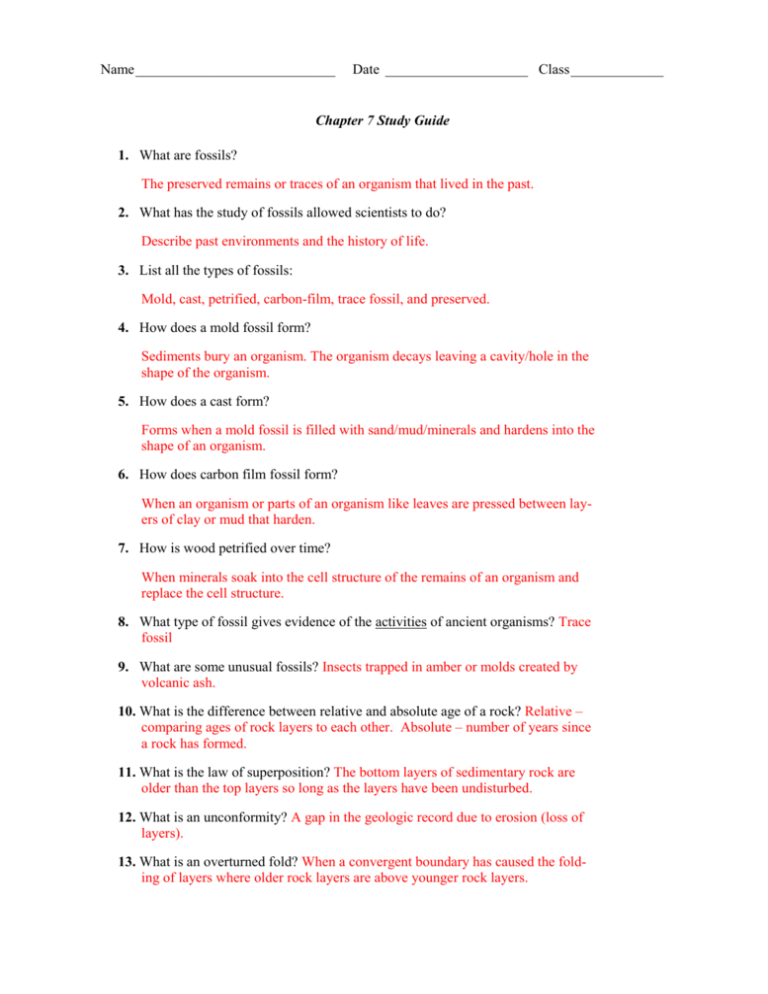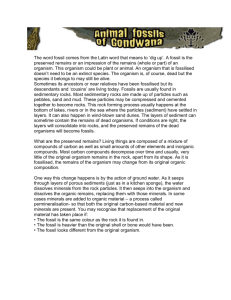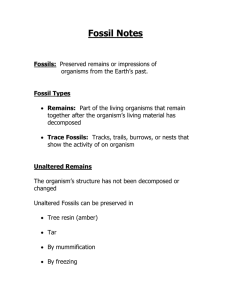Genetics: The Science of Heredity
advertisement

Name ____________________________ Date ____________________ Class _____________ Chapter 7 Study Guide 1. What are fossils? The preserved remains or traces of an organism that lived in the past. 2. What has the study of fossils allowed scientists to do? Describe past environments and the history of life. 3. List all the types of fossils: Mold, cast, petrified, carbon-film, trace fossil, and preserved. 4. How does a mold fossil form? Sediments bury an organism. The organism decays leaving a cavity/hole in the shape of the organism. 5. How does a cast form? Forms when a mold fossil is filled with sand/mud/minerals and hardens into the shape of an organism. 6. How does carbon film fossil form? When an organism or parts of an organism like leaves are pressed between layers of clay or mud that harden. 7. How is wood petrified over time? When minerals soak into the cell structure of the remains of an organism and replace the cell structure. 8. What type of fossil gives evidence of the activities of ancient organisms? Trace fossil 9. What are some unusual fossils? Insects trapped in amber or molds created by volcanic ash. 10. What is the difference between relative and absolute age of a rock? Relative – comparing ages of rock layers to each other. Absolute – number of years since a rock has formed. 11. What is the law of superposition? The bottom layers of sedimentary rock are older than the top layers so long as the layers have been undisturbed. 12. What is an unconformity? A gap in the geologic record due to erosion (loss of layers). 13. What is an overturned fold? When a convergent boundary has caused the folding of layers where older rock layers are above younger rock layers. 14. How do layers B and D compare in age? B is younger. D is older. 15. Layer G is an igneous intrusion. How could a geologist use layer G to infer the age of layer E? Layer G does not intrude into layer E, which indicates that layer E was laid down after G.



![F3-4 Study Guide for QUIZ [1/28/2016]](http://s3.studylib.net/store/data/006814899_1-56a576b1a51c0f876f28a8da0f15de89-300x300.png)



